Don't wanna be here? Send us removal request.
Text
The Essential Guide to Air Operated Grease Pumps: Keeping Machinery Running Smooth
In today’s fast-paced industrial landscape, maintaining machinery isn’t just about performance — it’s about ensuring uptime, reducing breakdowns, and extending the life of critical components. One unsung hero in this mission is the Air Operated Grease Pump.
Whether you're in automotive maintenance, heavy equipment servicing, or running a high-volume workshop, a reliable grease pump system is indispensable. Here's why the Air Operated Grease Pump Kit deserves a spotlight — and possibly a place in your maintenance setup.

What Is an Air Operated Grease Pump?
An Air Operated Grease Pump (also known as a pneumatic grease pump) uses compressed air to deliver grease at high pressure through hoses, enabling efficient lubrication in places manual greasing can’t reach. This technology drastically reduces manual effort and ensures precise grease application, reducing waste and contamination.
Air Powered Grease Pump Kits are ideal for applications where frequent and consistent greasing is required — especially in sectors like:
Construction
Mining
Agriculture
Fleet management
Manufacturing
Benefits of Using an Air Powered Grease Pump Kit
Here’s what makes the Air Operated Grease Pump Kit an industrial favorite:
1. Consistent Grease Delivery
Pneumatic systems are known for delivering a steady, high-pressure grease stream — critical for components that need thorough lubrication.
2. Reduced Operator Fatigue
Since the pump uses compressed air, it significantly minimizes manual labor, boosting worker efficiency and safety.
3. Longer Equipment Life
By delivering the right amount of lubrication regularly, these kits help reduce wear, prevent overheating, and lower maintenance costs over time.
4. Portability and Versatility
Most Air Powered Grease Pump Kits come with wheels or compact designs, making them suitable for workshops and remote operations alike.
Real-World Testimonial
“We switched to an Air Operated Grease Pump Kit last year for our fleet servicing, and the difference has been incredible. The downtime dropped, and our team is working more efficiently without the mess and hassle of manual pumps.” — Martin H., Maintenance Supervisor, Construction Equipment Ltd.
Key Features to Look For
When selecting an Air Operated Grease Pump, consider these factors:
Pump Ratio (e.g., 50:1 or 60:1): Determines the pressure output.
Hose Length and Reel: For reach and convenience.
Container Capacity: Match it to your grease consumption.
Compatibility with Grease Grades: Ensure it handles the viscosity required for your equipment.
Pro tip: A complete Air Powered Grease Pump Kit should include accessories like a follower plate, drum cover, high-pressure hose, and a grease gun or coupler.
FAQs
Q: Can I use an Air Operated Grease Pump in cold environments?
A: Yes, but ensure the grease you use has the proper viscosity for low temperatures, and the pump is rated for such conditions.
Q: How often should I service the pump?
A: Regular checks for hose integrity, grease quality, and air filters are recommended every few months, depending on usage intensity.
Q: Is there a difference between an Air Operated and an Electric Grease Pump?
A: Yes. Air-operated pumps rely on compressed air, making them ideal for explosive or damp environments, whereas electric pumps require a power source and are generally suited for fixed applications.

Final Thoughts
The Air Operated Grease Pump and Grease Guns is a small investment with a big impact. It not only simplifies lubrication tasks but also contributes directly to operational uptime, safety, and long-term savings.
0 notes
Text
Understanding the Role of a Fuel Flow Meter in Modern Industry
In the world of precision and efficiency, the Fuel Flow Meter has become a silent workhorse across industries. Whether in aviation, marine, automotive, or industrial applications, this device plays a critical role in measuring the accurate flow of fuel. With rising fuel costs and increasing environmental concerns, monitoring fuel consumption has never been more vital.
This blog dives deep into what a Fuel Flow Meter is, its importance, applications, and why businesses and operators should consider integrating this technology.

What Is a Fuel Flow Meter?
A Fuel Flow Meter is a device designed to measure the rate at which fuel is delivered or consumed. Installed in fuel lines, it provides real-time data on flow rates, which can then be used for performance monitoring, fuel management, and cost optimization.
There are various types of Fuel Flow Meters including:
Positive displacement meters
Turbine meters
Coriolis mass flow meters
Ultrasonic meters
Each type has its own advantages depending on the fuel type, flow range, and required accuracy.
Why Are Fuel Flow Meters Important?
Accurate fuel measurement is critical for several reasons:
✅ Cost Control: Knowing the exact amount of fuel used helps businesses identify inefficiencies and reduce unnecessary consumption.
✅ Environmental Responsibility: With stricter emission standards, accurate fuel data helps track carbon footprints and optimize fuel use.
✅ Performance Monitoring: For engines and machinery, monitoring fuel consumption allows operators to detect early signs of wear or malfunction.
✅ Compliance: Certain industries require detailed fuel records for compliance and reporting. A Fuel Flow Meter ensures these records are accurate.
Real-World Applications
The versatility of the Fuel Flow Meter means it finds use in various industries:
Aviation: Ensuring aircraft engines are performing efficiently while maintaining safety.
Marine: Tracking ship fuel usage to comply with international maritime regulations.
Automotive: Used in fleet management to monitor fuel use and improve route planning.
Industrial Equipment: Monitoring heavy machinery to optimize fuel consumption and reduce downtime.
Testimonial
“After installing a Fuel Flow Meter on our fleet, we saw a measurable reduction in fuel waste. Not only did it improve our bottom line, but it also helped us meet our sustainability goals.” — Logistics Manager, National Transport Company
Frequently Asked Questions (FAQs)
What is the accuracy of a Fuel Flow Meter?
Accuracy depends on the type and model, but many modern Fuel Flow Meters can achieve up to ±0.2% accuracy under ideal conditions.
Can it handle different fuel types?
Yes, there are meters designed for diesel, gasoline, aviation fuel, and even biofuels. It’s crucial to choose a meter compatible with your specific fuel type.
Is installation complicated?
Most Fuel Flow Meters are designed for easy installation and integration into existing systems. However, for best performance, professional installation is recommended.
How do I maintain a Fuel Flow Meter?
Regular calibration and cleaning are essential. Many modern meters come with self-diagnostic features to alert operators when maintenance is required.
How to Choose the Right Fuel Flow Meter
Selecting the right Fuel Flow Meter depends on several factors:
Fuel type
Flow rate range
Required accuracy
Environmental conditions
Budget
Consulting with a reputable supplier or technical expert can ensure you select the best meter for your needs.

Final Thoughts
The Fuel Flow Meter and Diesel Bowser is no longer just a nice-to-have; it is a critical tool for businesses looking to improve efficiency, reduce costs, and meet environmental standards. By offering real-time, accurate fuel data, it empowers operators to make smarter, data-driven decisions.
0 notes
Text
Diesel Transfer Pumps: A Complete Guide for Australian Users
When it comes to moving large volumes of fuel efficiently and safely, Diesel Transfer Pumps Australia has become a hot topic for industries ranging from agriculture to transport and mining. These pumps are designed specifically to handle diesel fuel, offering precision, durability, and reliability where it matters most. In this guide, we'll unpack what you need to know about Fuel Transfer Pumps, how they work, and why they are crucial for various applications across Australia.
What Are Diesel Transfer Pumps?
Diesel Transfer Pumps are mechanical or electrical devices used to move diesel fuel from one container to another, often from storage tanks to vehicles or machinery. They come in a variety of models, including manual, electric, and air-operated systems, making them versatile tools for both small and large-scale operations.

Key features typically include:
Durable construction for handling heavy-duty use
Safety mechanisms to prevent spills and overflows
Flow rate controls to manage the speed of fuel transfer
Compatibility with accessories like hoses, nozzles, and meters
Why Are They Essential?
In industries like agriculture, construction, and transport, fuel efficiency isn't just about vehicle performance—it's about managing fuel logistics on-site. Fuel Transfer Pumps save time, reduce manual labor, and help ensure environmental compliance by minimizing the risk of spills and leaks.
Testimonials from the Field
"Switching to electric Diesel Transfer Pumps Australia solutions has streamlined our farm operations significantly. We used to lose time hand-pumping diesel, but now it's just plug and play." — Jack T., Farm Manager, Queensland
"Our mining site relies on continuous heavy machinery operations, and downtime is expensive. Having reliable Fuel Transfer Pumps keeps everything moving smoothly." — Sarah L., Mining Operations Supervisor, Western Australia
Frequently Asked Questions (FAQs)
Q1: Can I use a diesel transfer pump for other fuels? Most Diesel Transfer Pumps are designed specifically for diesel. Using them with other fuels like petrol or kerosene can be dangerous and may void the warranty. Always check the manufacturer's specifications.
Q2: Are electric or manual pumps better? It depends on your needs. Manual pumps are cost-effective and suitable for small tasks, while electric pumps are faster and ideal for high-volume operations.
Q3: How do I maintain my diesel transfer pump? Regular cleaning, inspecting seals, and ensuring the hoses and nozzles are free of cracks can prolong the life of your pump. Always follow the manufacturer's maintenance guide.
Q4: What safety precautions should I follow? Always operate Fuel Transfer Pumps in well-ventilated areas, use approved containers, and avoid overfilling to reduce fire and spill hazards.
How to Choose the Right Diesel Transfer Pump
When selecting a Diesel Transfer Pump, consider:
Flow Rate Needs: Measured in liters per minute (LPM), match the pump capacity to your fueling tasks.
Power Source: Choose between electric (AC or DC), battery-powered, or manual, depending on site accessibility.
Durability: Look for corrosion-resistant materials, especially if working in harsh environments.
Ease of Use: Features like automatic shut-off nozzles and digital meters can improve efficiency.

Final Thoughts
Diesel Transfer Pumps Australia has become an indispensable part of the fuel logistics chain across various industries. By investing in the right Fuel Nozzles, businesses can enhance safety, improve efficiency, and ensure smooth day-to-day operations.
0 notes
Text
Fuel Transfer Equipments: Ensuring Safety, Efficiency, and Accuracy
In the complex world of fuel management, Fuel Transfer Equipments are the unsung heroes that ensure a smooth, safe, and precise distribution of fuels across industries. From transportation and agriculture to manufacturing and mining, these systems are integral in keeping operations running without disruption.
What Are Fuel Transfer Equipments?
Fuel Transfer Equipments refer to a broad range of mechanical systems and tools designed to safely and efficiently move fuel from one location to another. These typically include fuel pumps, hoses, meters, nozzles, storage tanks, and filtration units. The key objective is to transfer fuel from bulk containers or storage units into vehicles, machinery, or smaller tanks with minimal loss and maximum safety.

Components of a Fuel Transfer System
A typical Fuel Dispensing System comprises several key components:
Pump Unit: Powers the transfer of fuel.
Flow Meter: Measures the quantity of fuel dispensed.
Hoses and Nozzles: Direct fuel flow and facilitate controlled delivery.
Filtration System: Removes impurities to maintain fuel quality.
Control Panel: Enables automation and safety monitoring.
These components work in sync to ensure operational efficiency and prevent spills, overflows, and environmental contamination.
Applications Across Industries
Fuel Transfer Equipments are widely used in sectors such as:
Agriculture: Refueling tractors, harvesters, and irrigation engines.
Construction: Supplying fuel to heavy machinery on-site.
Logistics and Transportation: Managing fleet fueling needs.
Aviation: Ensuring precise delivery of aviation fuel.
Marine: Facilitating bunkering operations for ships and boats.
Their adaptability across different environments makes them indispensable for fuel-intensive industries.
Why Safety Matters
Fuel is highly flammable, and improper handling can lead to serious hazards including fires, explosions, and environmental harm. Fuel Dispensing Systems must comply with stringent safety standards and include features like:
Flameproof motors
Emergency shut-off valves
Anti-static hoses
Leak detection sensors
These safeguards are essential for both worker protection and regulatory compliance.
Industry Insight: What Users Are Saying
"Our operations became more efficient after upgrading to a modern Fuel Transfer Equipment setup. The precision of the system has helped us reduce wastage by nearly 15%." - Rajeev Menon, Plant Manager, Southern Mining Corp.
"As a fleet manager, the integration of a smart Fuel Dispensing System has been a game-changer. Real-time tracking and digital metering have simplified our fuel reporting and audits." - Priya Sharma, Logistics Lead, SkyTransport Pvt Ltd.
FAQs About Fuel Transfer Equipments
Q1: Are fuel transfer systems customizable? Yes. Depending on the application, systems can be tailored with different pump capacities, hose lengths, and monitoring features.
Q2: How often should Fuel Transfer Equipments be maintained? Routine checks every 3-6 months are recommended, with full servicing annually to ensure longevity and safety.
Q3: Can these systems handle biofuels or alternative fuels? Absolutely. Many modern systems are compatible with biodiesel, ethanol blends, and other fuel types.
Q4: Do they require power to operate? While most systems are electrically operated, manual and battery-powered options are available for remote locations.
Staying Ahead with Compliance and Innovation
The evolution of Fuel Transfer Equipments continues with innovations like:
IoT-enabled fuel monitoring
Mobile app integration
Enhanced filtration systems
Modular and portable units
As businesses scale, investing in reliable and efficient Fuel Dispensing Systems not only enhances performance but also contributes to long-term cost savings and environmental sustainability.

Conclusion
With increasing demand for safer and smarter fuel handling, the role of Urea Nozzle has never been more critical. By understanding their components, applications, and best practices, industries can harness their full potential while adhering to modern safety and environmental standards.
0 notes
Text
A Complete Guide to Digital Flow Meters: Accurate Measurement in the Digital Age
In today's data-driven world, precise measurement and control of liquid flow is crucial across industries—from automotive and aviation to agriculture and manufacturing. One innovative solution revolutionizing the way fluids are monitored is the Digital Flow Meter.
These compact, tech-enhanced devices are quickly replacing traditional analog systems. Offering greater accuracy, digital displays, and seamless integration with smart monitoring systems, digital fuel flow meters have become the backbone of modern fuel management.

What is a Digital Flow Meter?
A Digital Flow Meter is an electronic device that measures the volume or mass of a fluid (typically liquids like water or fuel) as it passes through a system. Unlike mechanical meters, digital models utilize sensors and microprocessors to provide precise, real-time data displayed on easy-to-read screens.
These meters are used in:
Fuel dispensing systems
Industrial fluid management
Agricultural irrigation systems
Water treatment plants
By minimizing human error and offering data logging capabilities, they help streamline operations and reduce waste.
Why Use a Digital Fuel Flow Meter?
When it comes to tracking fuel consumption, Digital Fuel Flow Meters offer unmatched benefits:
High Accuracy: They offer precise measurement within ±0.5%, which is essential for cost control.
Real-Time Monitoring: Display screens and connectivity options allow for instant feedback.
Low Maintenance: With fewer moving parts than mechanical meters, maintenance needs are drastically reduced.
Data Integration: Advanced models can connect to IoT systems for remote monitoring and automated reporting.
These features make them ideal for use in fleet management, construction, logistics, and marine industries.
Real User Experiences
"After switching to a digital fuel flow meter, our fleet's fuel tracking became incredibly streamlined. No more manual logs—just plug and play." — James T., Logistics Manager
"We saved thousands by detecting small leaks early, thanks to real-time data from our digital flow meters." — Priya R., Operations Head, Water Treatment Facility
Key Features to Look For
When selecting a digital fuel flow meter, consider the following:
Flow Range Compatibility: Ensure it supports the specific volume of fluid your system handles.
Material Durability: Stainless steel and corrosion-resistant polymers are best for long-term use.
Display Type: Look for large, backlit LCDs for readability in low-light environments.
Communication Protocols: Choose meters with Bluetooth, RS-485, or Modbus for system integration.
Battery Life: Industrial versions often run for years on a single set of batteries.
Frequently Asked Questions
Q1: Are digital flow meters only for industrial use? Not at all. While widely used in industries, they’re also suitable for residential and agricultural applications, especially where precision and automation are required.
Q2: Can I install a digital flow meter myself? Many models are designed for easy, inline installation. However, professional setup is recommended for large-scale systems or where integration with software is needed.
Q3: How long do digital fuel flow meters last? With proper maintenance and quality materials, they can last up to 10 years, depending on usage and environmental conditions.
Q4: Do these meters require calibration? Yes, periodic calibration ensures continued accuracy. Many digital meters include automatic calibration prompts or alerts.

The Future of Fluid Measurement
With increasing demand for data transparency and operational efficiency, Air Operated Diaphragm Pump are poised to become standard in all sectors involving fluid transfer. From improving environmental compliance to enhancing fuel economy, these devices are shaping a smarter, more efficient future.
Whether you're overseeing an industrial plant, managing a vehicle fleet, or optimizing a farm irrigation system, investing in a digital fuel flow meter can bring you one step closer to operational excellence.
0 notes
Text
The Ultimate Guide to Choosing the Right Hand Pump for Oil Transfer
Oil transfer is a crucial task in industries ranging from automotive to agriculture. Whether you need to move lubricating oil, fuel, or hydraulic fluid, a hand pump for oil transfer is a reliable and cost-effective solution. Unlike electric pumps, these manual devices do not require power, making them highly portable and convenient for various applications.
But with so many options available, how do you choose the best hand pump for oil transfer? In this guide, we will walk you through everything you need to know about these pumps, their types, benefits, and how to select the right one for your needs.
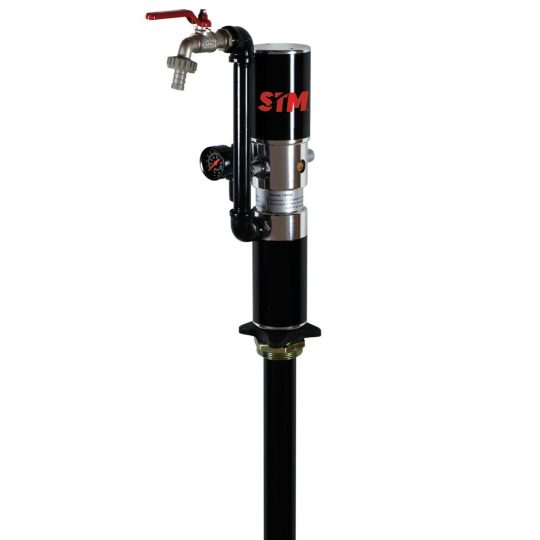
Why Use a Hand Pump for Oil Transfer?
Hand pumps are a popular choice for oil transfer due to their simplicity and effectiveness. Here are a few reasons why they stand out:
Portability – These pumps do not require electricity, making them easy to carry anywhere.
Durability – Made from robust materials, they withstand harsh environments.
Safety – They reduce the risk of spills and leaks compared to pouring manually.
Ease of Use – Simple mechanisms allow anyone to operate them with minimal training.
Cost-Effective – They are more affordable than electric pumps and require little maintenance.
Types of Hand Pumps for Oil Transfer
Understanding the different types of hand pumps for oil transfer is essential to making the right choice.
1. Piston Pumps
These pumps use a reciprocating motion to create suction, drawing oil up and expelling it through the outlet. They are ideal for low-to-medium viscosity oils and work well in moderate transfer applications.
2. Rotary Pumps
Rotary hand pumps operate using a rotating mechanism, providing a continuous flow of oil. They are perfect for transferring medium-to-high viscosity oils with ease and efficiency.
3. Siphon Pumps
Using gravity and suction, siphon pumps allow oil to flow smoothly from one container to another. They are best suited for situations where height difference can be utilized for fluid transfer.
4. Lever Pumps
A lever hand pump delivers high efficiency and is best for applications requiring quick transfer with minimal effort. They work well with motor oil, diesel, and hydraulic fluids.
How to Choose the Best Hand Pump for Oil Transfer
Selecting the right hand pump for oil transfer depends on several factors:
Oil Type & Viscosity – Ensure the pump can handle the viscosity of your oil.
Material Compatibility – Choose a pump made of corrosion-resistant materials like stainless steel or polypropylene.
Flow Rate Requirement – Consider how much oil you need to transfer per minute.
Ease of Operation – Look for a pump with a comfortable grip and smooth mechanism.
Durability & Maintenance – Opt for a low-maintenance pump that lasts longer.
User Testimonials
"I've been using a rotary hand pump for transferring hydraulic oil in my workshop. It's incredibly efficient and saves me a lot of time!" – David R., Automotive Technician
"I needed a reliable solution for transferring diesel in my farm. The lever hand pump I bought has been working flawlessly for months." – Sarah M., Farmer
FAQs
Q: Can I use a hand pump for different types of oil? A: Yes, but you should always check the pump’s compatibility with the specific type of oil you plan to transfer.
Q: How do I maintain my hand pump for oil transfer? A: Regularly clean the pump, check for leaks, and store it in a dry place to prolong its lifespan.
Q: Are hand pumps safe for fuel transfer? A: Yes, but ensure you choose a pump specifically designed for fuel transfer to prevent hazards.
Final Thoughts
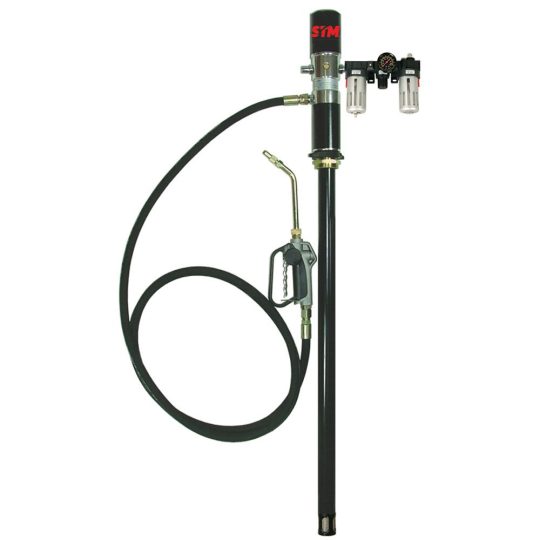
A Fuel Transfer Equipments is a simple yet highly effective tool for various oil-moving needs. Whether you're in the automotive, industrial, or agricultural sector, having the right pump ensures efficiency, safety, and cost savings. Consider the oil type, viscosity, and pump material before making a purchase to ensure you get the best product for your needs.
By investing in the right hand pump, you can make oil transfer a hassle-free task while minimizing waste and spills. Take your time, compare options, and choose wisely!
0 notes
Text
Understanding DEF Equipment: A Must-Have for Emission Control
Diesel Exhaust Fluid (DEF Equipment) plays a crucial role in reducing harmful emissions from diesel engines. As environmental regulations tighten worldwide, businesses and fleet operators must ensure they are equipped with the right DEF Equipment to stay compliant and improve efficiency.
What is DEF Equipment?
DEF Equipment refers to the tools, storage solutions, and dispensing systems used to handle Diesel Exhaust Fluid (DEF). This specialized fluid is essential for modern diesel engines that use Selective Catalytic Reduction (SCR) technology to minimize nitrogen oxide (NOx) emissions.
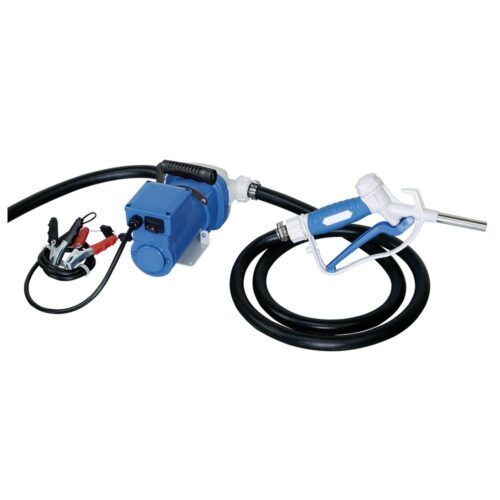
Types of DEF Equipment
To manage DEF efficiently, various types of equipment are available, including:
DEF Storage Tanks – Available in different sizes, these tanks keep DEF at optimal temperatures to maintain its purity.
DEF Pumps and Dispensers – Ensure controlled flow for refueling fleet vehicles or machinery.
DEF Transfer Systems – Used to move DEF from storage to dispensing units.
Portable DEF Containers – Ideal for mobile refueling in construction and agriculture industries.
DEF Monitoring Systems – Help track DEF levels and prevent contamination.
Why is DEF Equipment Essential?
1. Regulatory Compliance
With emission standards becoming stricter, having the right DEF Equipment ensures that vehicles and machinery meet environmental regulations. Non-compliance can lead to hefty fines and operational disruptions.
2. Increased Engine Efficiency
DEF helps engines run cleaner, reducing wear and tear. This leads to improved performance and longevity, making DEF Equipment a valuable investment for any business relying on diesel-powered fleets.
3. Cost Savings
Efficient DEF Equipment minimizes waste, preventing unnecessary expenses. With automated monitoring systems, businesses can ensure they have adequate DEF levels without overstocking or running out unexpectedly.
4. Environmental Responsibility
Using DEF Equipment reduces harmful emissions, contributing to a cleaner environment. As sustainability becomes a key business priority, investing in DEF solutions aligns with corporate social responsibility (CSR) initiatives.
How to Choose the Right DEF Equipment
When selecting DEF Equipment, consider the following factors:
Storage Needs: Do you require a stationary tank or a mobile solution?
Usage Frequency: High-usage fleets need robust dispensing systems.
Environmental Conditions: DEF is sensitive to extreme temperatures; choose insulated storage options for colder regions.
Compliance: Ensure the equipment meets industry regulations and manufacturer specifications.
Testimonials
"Switching to a high-quality DEF dispenser has streamlined our fleet operations. We no longer worry about contamination or inaccurate DEF levels." – Jake M., Fleet Manager
"Having a proper DEF storage system has saved us from unnecessary costs and downtime. It’s an essential part of our equipment now." – Laura D., Construction Site Supervisor
FAQs About DEF Equipment
Q: Can I store DEF in any container?
A: No, DEF requires specialized storage containers made of stainless steel or DEF-approved polyethylene to prevent contamination.
Q: What happens if DEF gets contaminated?
A: Contaminated DEF can cause damage to the SCR system, leading to costly repairs. Always use DEF Equipment designed to maintain purity.
Q: How often should DEF be refilled?
A: This depends on engine size and usage. Generally, DEF consumption is around 2-3% of diesel fuel usage.
Q: Can DEF freeze in cold temperatures?
A: Yes, DEF freezes at around 12°F (-11°C). However, modern DEF Equipment includes heating systems to prevent freezing and maintain fluid quality.
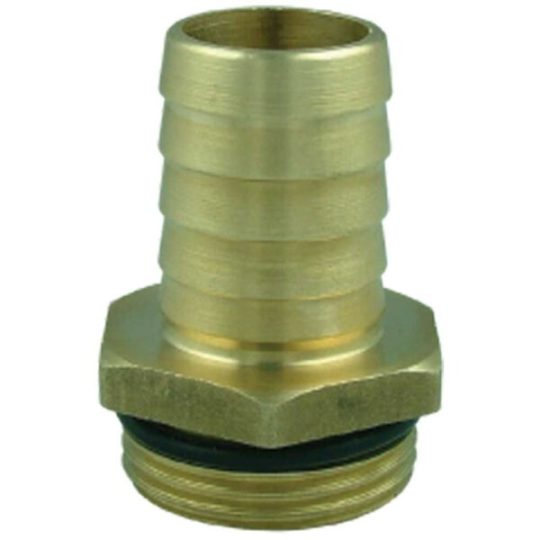
Final Thoughts
Investing in reliable DEF Equipment like Oil Drainers is essential for businesses and industries that rely on diesel-powered machinery. It ensures regulatory compliance, improves engine performance, and contributes to a cleaner environment. Whether you need storage tanks, dispensers, or monitoring systems, choosing the right equipment will help optimize operations and prevent costly issues.
0 notes
Text
Essential Battery Accessories for Efficient Power Management
When it comes to batteries online, having the right battery accessories is just as important as selecting the right battery. Whether for vehicles, home energy storage, or portable devices, accessories help enhance performance, longevity, and safety. From battery chargers to terminal connectors, understanding their importance can save you time and money.
Why Battery Accessories Matter
Battery accessories play a critical role in maintaining and optimizing the efficiency of your power systems. Investing in high-quality accessories ensures:

Extended Battery Life – Proper charging and maintenance reduce wear and tear.
Improved Safety – Accessories like battery isolators prevent overcharging and electrical faults.
Better Performance – A well-maintained battery with the right accessories delivers consistent power output.
Convenience – Smart chargers and monitoring devices keep you informed about battery health.
Must-Have Battery Accessories
1. Battery Chargers
A battery charger is essential for keeping your battery at its peak performance. Whether for cars, boats, or solar storage, choosing the right charger helps prevent deep discharge and extends battery lifespan.
Tip: Look for smart chargers that automatically adjust voltage and current to prevent overcharging.
2. Battery Terminal Connectors
Corroded or loose terminals can lead to poor conductivity and performance issues. Investing in high-quality battery terminal connectors ensures a secure and reliable connection, reducing power loss and increasing efficiency.
3. Battery Isolators
If you rely on multiple batteries, a battery isolator ensures that your main battery doesn’t drain when additional accessories or backup power sources are in use. This is especially useful for marine, RV, and off-grid applications.
4. Battery Trays and Holders
To prevent movement and potential damage, battery trays and holders provide stability, reducing the risk of short circuits and leaks. These are essential for automotive and industrial applications.
5. Battery Monitors
A battery monitor keeps track of your battery’s charge level, voltage, and overall health. These devices help avoid unexpected power failures and optimize charging cycles.
Buying Batteries and Accessories Online
Finding the right battery and accessories is easier than ever with a reliable batteries online store. Shopping online offers the advantage of comparing specifications, reading customer reviews, and getting expert advice before making a purchase.
What to Look for in an Online Battery Store:
Variety – Ensure the store offers a wide range of batteries and accessories.
Trusted Brands – Choose a supplier that stocks reputable brands.
Detailed Product Descriptions – Look for technical specifications and compatibility information.
Customer Support – A good store provides expert guidance and responsive service.
Fast Delivery – Timely shipping ensures you get your accessories when you need them.
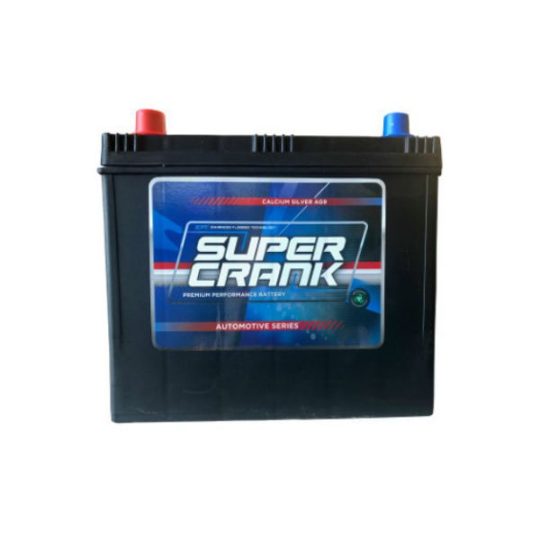
FAQ: Common Questions About Battery Accessories
Q: How do I know which battery charger to buy? A: Consider your battery type (lead-acid, lithium, AGM) and its capacity (Ah rating). Choose a smart charger with multiple charging modes for optimal performance.
Q: Can I use any terminal connector for my battery? A: No, always use the correct size and type for your battery terminals to ensure a secure fit and proper conductivity.
Q: Are battery isolators necessary for dual-battery setups? A: Yes, they prevent your primary battery from draining while allowing secondary batteries to charge and power accessories.
Customer Testimonials
"I bought my charger from a trusted batteries online store and couldn’t be happier. It automatically adjusts to my battery’s needs, and I’ve noticed improved performance!" – Sam T.
"After installing a battery monitor, I no longer worry about unexpected battery failures. A game-changer for my off-grid setup!" – Lisa P.
Conclusion
Whether you’re buying Auto Parts Stores Melbourne for personal or professional use, investing in quality products ensures better efficiency, safety, and longevity. Shopping from a reputable battery Melbourne supplier or a reliable batteries online store guarantees access to the best products for your needs. With the right accessories, you can maximize your battery’s performance and reliability for years to come.
0 notes
Text
The Ultimate Guide to Diesel Transfer Pumps in Australia
When it comes to efficient fuel management, Diesel Transfer Pumps Australia offers a variety of solutions that cater to industries ranging from agriculture to construction. Choosing the right Fuel Transfer Pumps can significantly improve productivity, reduce fuel waste, and ensure safe handling. This guide explores everything you need to know about Diesel Transfer Pumps, helping you make informed decisions for your specific needs.
What Are Diesel Transfer Pumps?
Diesel Transfer Pumps are specialized devices designed to move diesel fuel from one container to another, often from a storage tank to machinery or vehicles. These pumps come in various configurations, including manual, electric, and battery-operated models, each tailored for different usage scenarios.
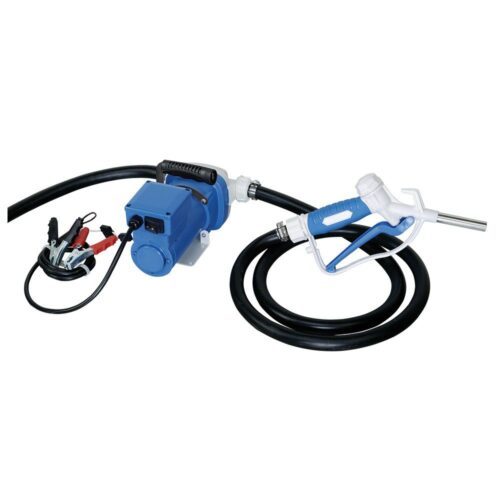
Key Features to Consider
When choosing Diesel Transfer Pumps Australia, consider the following features to ensure you select the best option for your needs:
Flow Rate: Measured in liters per minute (LPM), this indicates how quickly fuel can be transferred.
Portability: Lightweight and compact designs are ideal for on-the-go applications.
Durability: Look for corrosion-resistant materials and robust construction.
Safety Features: Automatic shut-off, anti-siphoning devices, and filters are crucial for safe operation.
Benefits of Using Diesel Transfer Pumps
Efficiency: Reduces time spent refueling machinery.
Precision: Allows accurate fuel measurement to prevent overflows.
Safety: Minimizes the risk of spills and contamination.
Cost-Effectiveness: Reduces fuel waste, saving money in the long run.
Real-World Testimonials
"We switched to electric Diesel Transfer Pumps for our construction fleet, and the efficiency boost was immediate. No more manual pumping or spillage issues." – Mark T., Construction Manager, Sydney.
"Our farm relies heavily on PTO-driven Fuel Transfer Pumps, and they've proven to be reliable even in harsh conditions." – Sarah L., Farmer, Victoria.
Maintenance Tips for Longevity
Proper maintenance of your Diesel Transfer Pumps ensures they function optimally and last longer.
Regular Inspection: Check hoses, seals, and nozzles for wear and tear.
Clean Filters: Prevent clogs and maintain flow rates.
Proper Storage: Store in a dry, cool place to avoid corrosion.
Lubrication: Keep moving parts well-lubricated for smooth operation.
Common Applications in Australia
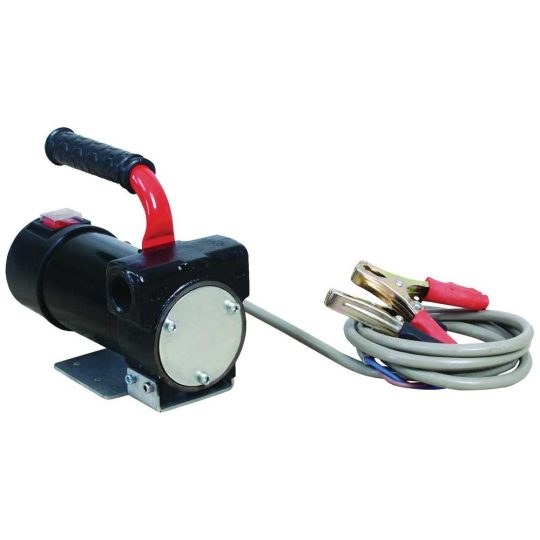
In Australia, Diesel Transfer Pumps are indispensable across various sectors:
Agriculture: Refueling tractors, harvesters, and irrigation pumps.
Construction: Powering heavy machinery and generators.
Mining: Efficient fuel handling for remote operations.
Transport: Keeping commercial fleets fueled and ready.
Conclusion
Investing in the right Diesel Transfer Pumps Australia can streamline operations, improve safety, and reduce costs across multiple industries. Whether you're in agriculture, construction, or transport, understanding your specific needs will guide you to the best Fuel Nozzles available. With proper maintenance and careful selection, these pumps can become a vital part of your daily operations.
For more insights on selecting the best equipment for your needs, stay tuned to our blog for the latest updates and expert advice.
1 note
·
View note